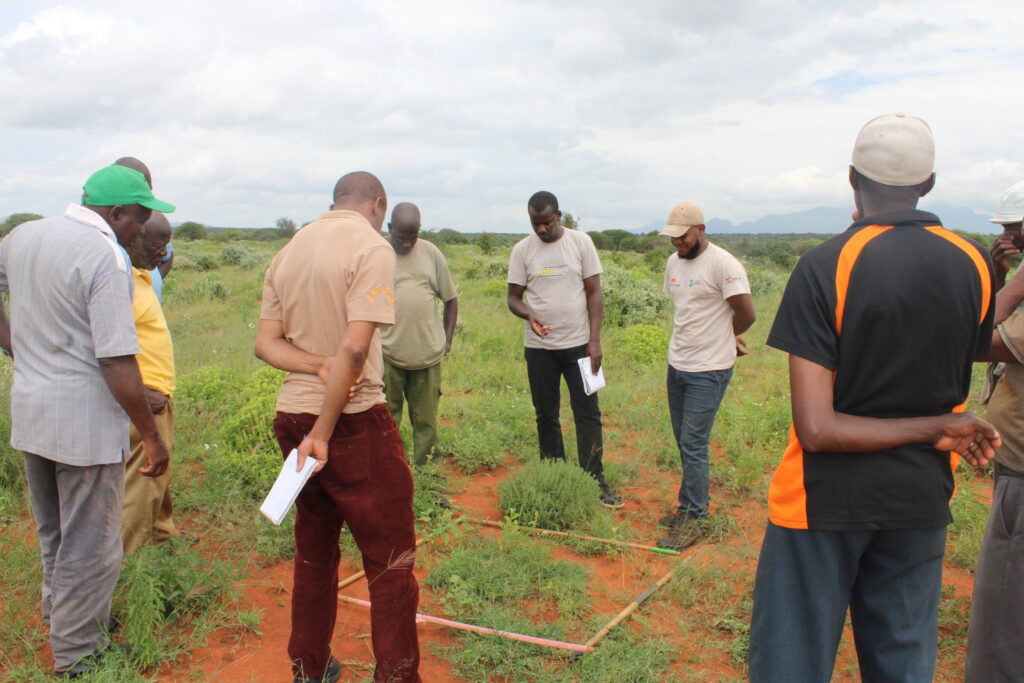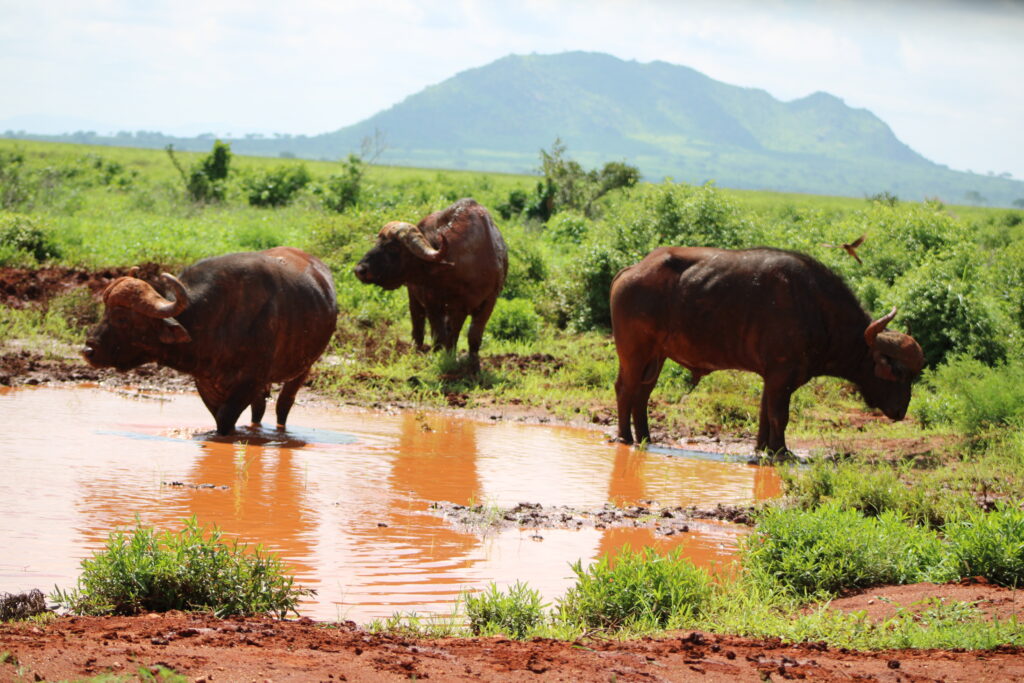THE TSAVO LIONS
The Tsavo Conservation Area (TCA) contains the largest national park in East Africa and is well-known for its famous “man-eating” lions from the late 1800s. Although the TCA (consisting of Tsavo East, Tsavo West, and Chyulu Hills National Parks, community-based conservancies and ranches) is regarded by the global conservation community as a “lion stronghold” (defined as an area containing a stable or increasing population of >500 individuals), the reality is sobering: the TCA houses roughly 459 lions or ~10% of what would be expected based on its immense size. The best evidence available suggests that TCA’s low lion numbers are a consequence of competition with humans for prey, human-lion conflict due to livestock depredation and land degradation due to overgrazing by livestock.
Through collaboration with the communities and other partners, our work focuses on addressing the challenges to inform the basis of TCA’s conservation strategy for lions, other large carnivores, and their prey. Additionally, our work will ensure that conservation efforts within TCA are grounded in the best science possible, thereby providing a major step toward regaining the status of TCA as a lion stronghold. Our activities include:
Monitoring populations, resource selection, and demographics (population growth, vital rates) of lions and their prey.
This aim will help to answer the question of how and why lions occupy certain areas within the park and community conservancies, and the consequences of such resource selection for population change of lions. Part of this aim includes working to understand why lion population size is low in the greater Tsavo Conservation Area. To achieve this, we are improving the quantitative rigor used to estimate population trends and distributions of lions within TCA, by exhaustively establishing baseline information for lions and their prey.
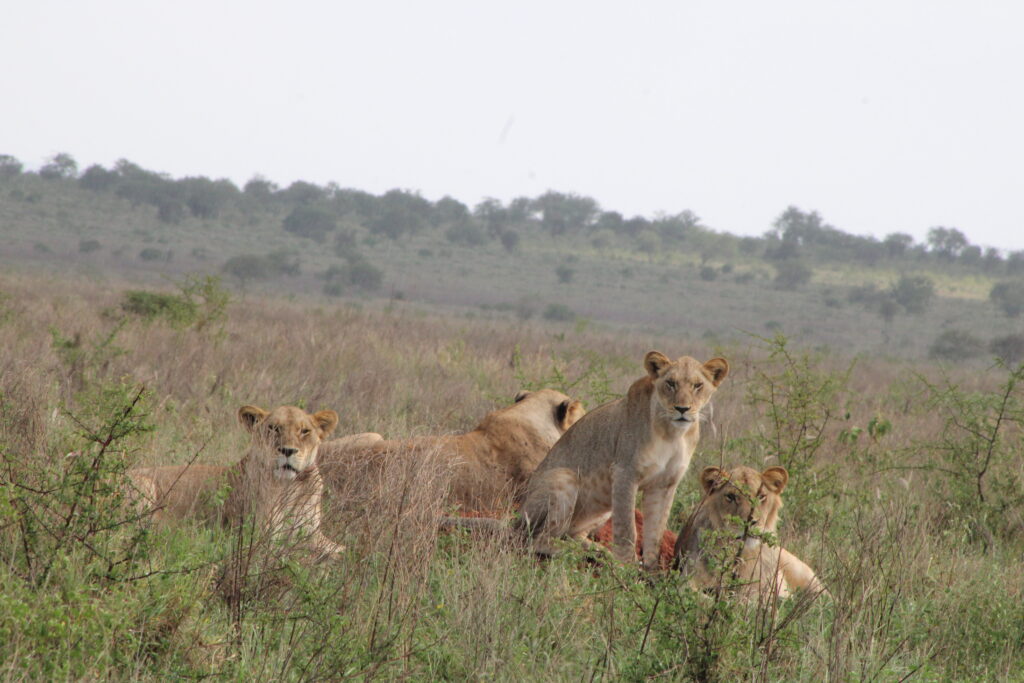
Lion collaring
In collaboration with the Kenya Wildlife Service, we are fitting one adult lion in each of 10 prides with a GPS collar, allowing us to relocate prides to quantify population sizes through sight-resight methodologies and analyze their occupancy and resource selection. Lions live in stable social units(pride), thereby allowing regular resighting of uncollared individuals. Additionally, the real time GPS collars provide real time insights into pride movements, hunting patterns, and interactions with the environment. As prey becomes depleted due to poaching, lions travel greater distances in search of food, increasing the likelihood to human-lion conflict. The collars help in closely tracking the lion movement to mitigate conflict with humans.
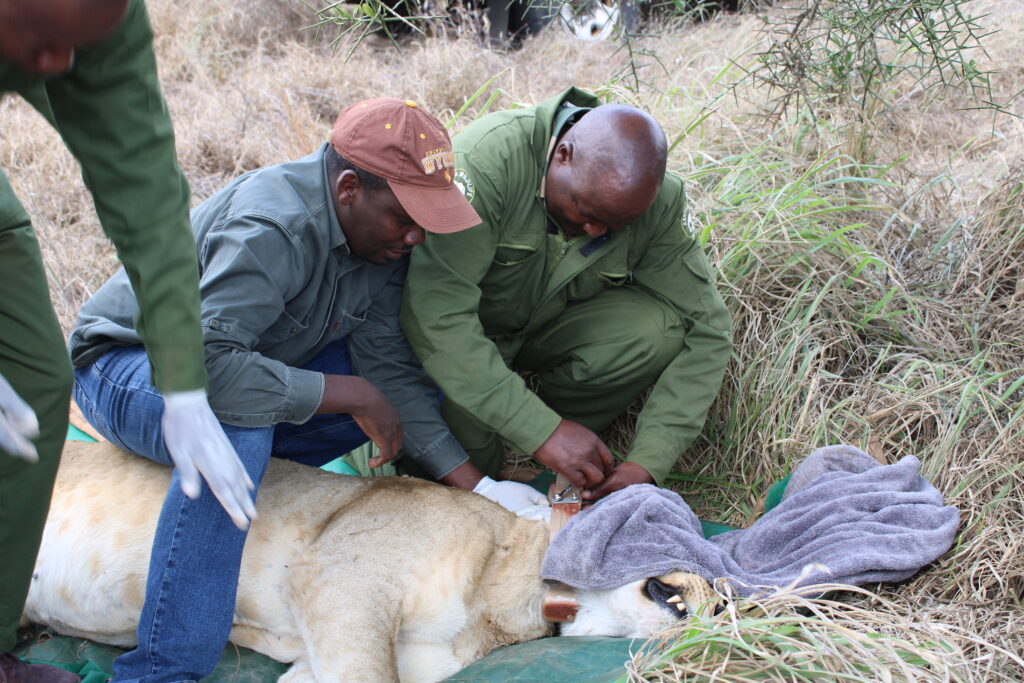
Camera trapping
Camera traps work throughout the diel cycle and can be left in the field for a long period of time unattended, allowing for intensive and prolonged data collection. They are particularly well suited for the study of rare and elusive species, and they have proven to be more efficient compared to other indirect methods of detecting species. We are deploying camera traps to determine lion occupancy within TCA.
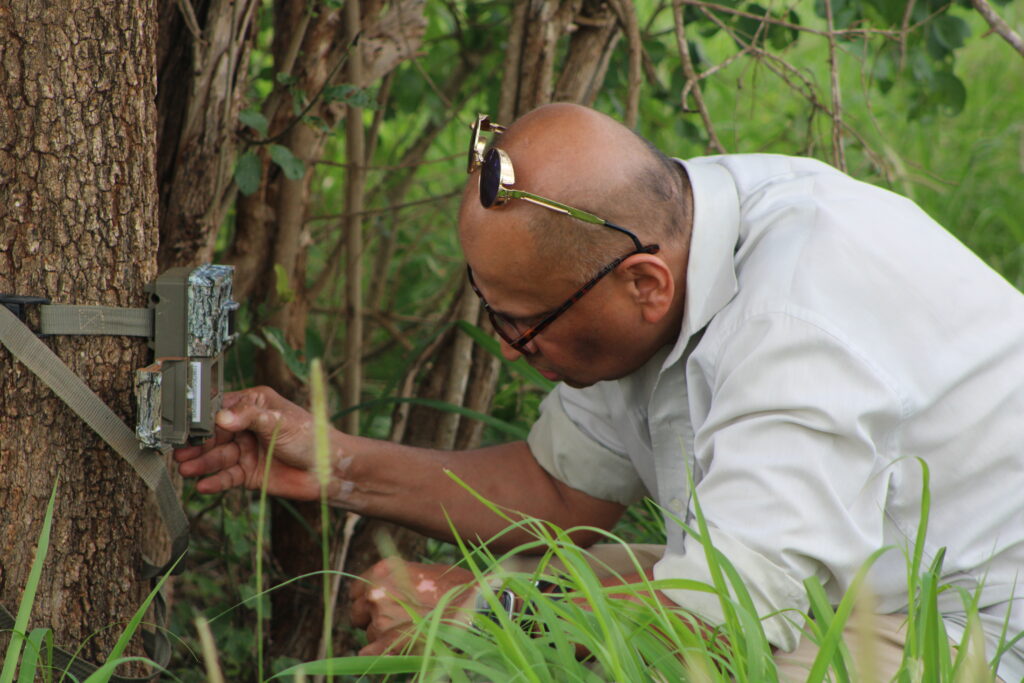
Working with communities to improve landscape connectivity through the restoration of degraded lands using planned grazing
Land degradation is threatening lion and prey populations due to the loss of landscape connectivity between Tsavo West and Tsavo East National Parks within the TCA, historically linked through intervening community-based conservancies and ranches. Because prey avoid such overgrazed areas, most community-based conservancies and ranches are effectively isolated from the broader TCA. Such a loss of connectivity not only has the potential to reduce population sizes of prey on which lions depend, but it also forces lions to prey on livestock in and around community-based conservancies and ranches. Such prey switching (from wild herbivores to livestock) ultimately reduces lion numbers due to retaliatory killing of lions by humans. the dynamic between historical overgrazing by livestock, avoidance of overgrazed areas by wild herbivores, prey switching by lions, and retaliatory killing by humans creates a negative feedback, thereby limiting the capacity of the TCA as a key stronghold for conservation of lions and other large carnivores.
